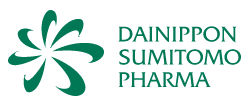预约演示
更新于:2025-08-29

Chongqing Shenghuaxi Pharmaceutical Co. Ltd.
更新于:2025-08-29
概览
标签
消化系统疾病
神经系统疾病
内分泌与代谢疾病
小分子化药
疾病领域得分
一眼洞穿机构专注的疾病领域
暂无数据
技术平台
公司药物应用最多的技术
暂无数据
靶点
公司最常开发的靶点
暂无数据
| 排名前五的药物类型 | 数量 |
|---|---|
| 小分子化药 | 3 |
关联
3
项与 重庆圣华曦药业股份有限公司 相关的药物作用机制 5-HT2 receptor拮抗剂 [+1] |
最高研发阶段批准上市 |
首次获批国家/地区 瑞典 |
首次获批日期1998-01-01 |
作用机制 adrenergic receptor激动剂 |
最高研发阶段批准上市 |
首次获批国家/地区 日本 |
首次获批日期1989-01-17 |
作用机制 H2 receptor拮抗剂 |
原研机构 |
非在研适应症- |
最高研发阶段批准上市 |
首次获批国家/地区 日本 |
首次获批日期1986-07-01 |
51
项与 重庆圣华曦药业股份有限公司 相关的临床试验CTR20252763
佩玛贝特片在健康成年研究参与者中空腹状态及高脂餐后单次口服给药的随机、开放、两周期、两序列、交叉设计生物等效性研究
主要研究目的:研究重庆圣华曦药业股份有限公司生产的佩玛贝特片(规格:0.1mg)在中国健康研究参与者中空腹状态及高脂餐后以口服途径单次给药的药代动力学特征,并以興和株式会社持有,興和株式会社生产的佩玛贝特片(商品名:PARMODIA®;规格:.1mg)
为参比制剂,进行生物等效性评价。 次要研究目的:初步考察佩玛贝特片受试制剂和参比制剂在健康研究参与者中的安全性。
开始日期2025-07-23 |
申办/合作机构 |
CTR20252827
克唑替尼胶囊在健康成年研究参与者中空腹状态及高脂餐后单次口服给药的随机、开放、两周期、两序列、交叉设计生物等效性研究
主要研究目的:研究重庆圣华曦药业股份有限公司生产的克唑替尼胶囊(规格:250mg)在中国健康研究参与者中空腹状态及高脂餐后以口服途径单次给药的药代动力学特征,并以PFIZER EUROPE MA EEIG持有,Pfizer Manufacturing Deutschland mbH,Betriebsstatte Freiburg生产的克唑替尼胶囊(商品名:赛可瑞®/XALKORI®;规格:250mg)为参比制剂,进行生物等效性评价。 次要研究目的 :初步考察克唑替尼胶囊受试制剂和参比制剂在健康研究参与者中的安全性。
开始日期2025-07-21 |
申办/合作机构 |
CTR20252397
乙酰半胱氨酸片在健康成年受试者中空腹状态及高脂餐后单次口服给药的随机、开放、两周期、两序列、交叉设计生物等效性试验
主要研究目的:研究重庆圣华曦药业股份有限公司生产的乙酰半胱氨酸片(规格:0.6g)在中国健康受试者中空腹状态及高脂餐后以口服途径单次给药的药代动力学特征,并以Zambon Svizzera SA持有Zambon Svizzera SA生产的乙酰半胱氨酸片(商品名:Fluimucil®;规格:600mg)为参比制剂,进行生物等效性评价。 次要研究目的:初步考察乙酰半胱氨酸片受试制剂和参比制剂在健康受试者中的安全性。
开始日期2025-06-27 |
申办/合作机构 |
100 项与 重庆圣华曦药业股份有限公司 相关的临床结果
登录后查看更多信息
0 项与 重庆圣华曦药业股份有限公司 相关的专利(医药)
登录后查看更多信息
1
项与 重庆圣华曦药业股份有限公司 相关的文献(医药)2018-10-01·Zhongguo Zhong yao za zhi = Zhongguo zhongyao zazhi = China journal of Chinese materia medica
[Research progress on pharmacokinetics and pharmacological activities of artesunate].
Review
作者: Li, Pan ; Cen, Yan-Yan ; Zeng, Xiu-Xiu ; Zhou, Hong ; Zao, Yi-Bo ; Li, Xiao-Li
Artesunate (AS), a famous derivative of the artemisinin, is the basic treatment globally for mild to severe malaria infection due to the prominent advantages such as high efficiency, fast effect, low toxicity and not easy to produce resistance. More and more research reports have shown that AS and its active metabolites dihydroartemisinin (DHA) had various bioactivities in addition to antimalarial activity, attracting researchers to further study its new pharmacological effects in order to explore new use of the old drug. A comprehensive understanding of the pharmacokinetic characteristics of AS will be conducive to the further development of new pharmacological actions and clinical application of AS. Therefore, this paper would review the absorption, distribution, metabolism and excretion of AS in vivo, as well as the pharmacokinetics characteristics of AS and DHA after clinical administration of AS by intravenous (IV), intramuscular (IM), oral or rectal routes. The in vivo process and pharmacokinetic parameters of AS and DHA were compared between healthy volunteers, malaria patients, and special populations (children, women). Meanwhile, the research progress on pharmacological effects of AS and active metabolite DHA such as anti-tumor, anti-inflammatory, anti septic, antiangiogenic, anti-fibrosis and immunoregulation activities would be also reviewed, hoping to provide a theoretical basis for the further development and utilization of AS and its metabolites.
119
项与 重庆圣华曦药业股份有限公司 相关的新闻(医药)2025-08-29
·米内网
精彩内容
8月28日,CDE官网显示,倍特药业的钆喷酸葡胺注射液以仿制4类报产获受理。该产品是一款磁共振造影剂,2024年在中国公立医疗机构终端销售额超7亿元,2025Q1销售额同比涨逾10%。今年以来,倍特药业已有33款产品报产在审。
来源:CDE官网
钆喷酸葡胺注射液主要用于中枢神经(脑及脊髓)、腹、胸、盆腔、四肢等人体脏器和组织的磁共振成像,也用于肾功能评估,目前已纳入全国医保乙类药目录。
在中国城市公立医院、县级公立医院、城市社区中心及乡镇卫生院(简称中国公立医疗机构)终端,钆喷酸葡胺注射液2024年市场规模超过7亿元;2025Q1销售额同比增长10.75%,是磁共振造影剂TOP1产品。
近年来中国公立医疗机构终端钆喷酸葡胺注射液销售趋势(单位:万元)
来源:米内网中国公立医疗机构药品终端竞争格局
米内网数据显示,钆喷酸葡胺注射液目前有6家企业拥有生产批文;5家企业以新分类申报上市,2家企业提交了一致性评价补充申请,其中广州康臣药业、鲁南制药、北京北陆药业和四川国瑞药业先后获批过评/视同过评,另有司太立制药、重庆圣华曦药业、倍特药业均以仿制4类报产在审。
今年以来,倍特药业已有33款产品报产在审,涵盖抗肿瘤和免疫调节剂、心脑血管系统药物、全身用抗感染药物、神经系统药物、消化系统及代谢药、杂类等多个治疗大类。
今年以来倍特药业申报上市产品情况
来源:米内网中国申报进度(MED)数据库
注:带*为纳入优先审评品种
其中,苯磺酸美洛加巴林片、瑞维那新吸入溶液、螺内酯口服混悬液、佩玛贝特片、阿糖胞苷注射液等暂无国产仿制药获批,泊沙康唑口服混悬液、熊去氧胆酸口服混悬液、磷酸芦可替尼片、脂肪乳氨基酸(17)葡萄糖(19%)注射液等拥有生产批文的国内企业仅有1家。
资料来源:米内网数据库、CDE官网
注:米内网《中国公立医疗机构药品终端竞争格局》,统计范围:中国城市公立医院、县级公立医院、城市社区中心以及乡镇卫生院,不含民营医院、私人诊所、村卫生室;上述销售额以产品在终端的平均零售价计算。数据统计截至8月29日,如有疏漏,欢迎指正!
免责声明:本文仅作医药信息传播分享,并不构成投资或决策建议。本文为原创稿件,转载文章或引用数据请注明来源和作者,否则将追究侵权责任。投稿及报料请发邮件到872470254@qq.com稿件要求详询米内微信首页菜单栏商务及内容合作可联系QQ:412539092
【分享、点赞、在看】点一点不失联哦
2025-08-28
·米内网
精彩内容
8月28日,2025国谈最终过审名单出炉,第十一批集采也进入了倒计时,9款治疗与胃酸分泌相关疾病的药物将在院内市场掀起新风浪。在院外市场,该类药物2024年及2025年Q1连续正增长,逐渐恢复活力;石药集团一跃成为新的国内龙头集团,今年再有超过20家国内药企新加入战局;32个品牌挺进两大TOP20榜单,丽珠、康恩贝、济川、罗欣、悦康全力出击。
零售药店恢复活力,石药集团首夺国内龙头
消化性溃疡已成为常见高发疾病,治疗与胃酸分泌相关疾病的药物需求正在不断提升,然而在集采和国谈的双重压力下,这个300亿市场从2022年起持续下滑,形势十分严峻。
图1:零售药店终端治疗与胃酸分泌相关疾病的药物销售情况(单位:万元)
来源:米内网零售药店终端竞争格局
在中国零售药店终端(城市实体药店+网上药店),治疗与胃酸分泌相关疾病的药物销售额在2022-2023年有连续下滑态势,但在2024年止跌回升了0.59%,2025年Q1再有4.72%的增长,正在逐渐恢复活力,潜力依然可期。
表1:2025年Q1零售药店终端治疗与胃酸分泌相关疾病的药物TOP10集团
来源:米内网零售药店终端竞争格局
在零售药店终端,2025年Q1治疗与胃酸分泌相关疾病的药物市场继续由阿斯利康领军,拜耳蝉联TOP2集团,石药集团则首次冲上TOP3集团并成为了新的国内龙头集团,成绩亮眼。
图2:石药集团的治疗与胃酸分泌相关疾病的药物在零售药店终端的销售情况(单位:万元)
来源:米内网零售药店终端竞争格局
近几年在零售药店终端,石药集团的治疗与胃酸分泌相关疾病的药物销售额一直稳步增长,2022年起增速达双位数,2024年销售额涨至2.6亿元,2025年Q1增速高达39.74%是近六年最高值。石药集团在该类药物市场的畅销产品包括了奥美拉唑肠溶胶囊、艾司奥美拉唑镁肠溶胶囊(2021年获批)、雷贝拉唑钠肠溶片(2023年获批)、盐酸雷尼替丁胶囊、法莫替丁片、注射用奥美拉唑钠。
表2:今年以来首次入局治疗与胃酸分泌相关疾病的药物市场的国内药企
来源:米内网中国申报进度(MED)数据库
据米内网数据显示,2025年至今累计有超过70个治疗与胃酸分泌相关疾病的新产品获批(按产品名+企业统计),涉及60多家一级集团。江西施美药业、广州新济药业、湖南先施制药等21家一级集团是首次有治疗与胃酸分泌相关疾病的药物获批,成功进入这个300亿市场。
32个品牌亮相热销榜,康恩贝排名上升,丽珠猛涨232%
细分市场,在中国城市实体药店治疗与胃酸分泌相关疾病的药物在2022-2024年连续下滑了8.58%、8.44%、2.65%,2025年Q1恢复正增长,涨幅为0.02%。
表3:2025年Q1中国城市实体药店治疗与胃酸分泌相关疾病的药物TOP20品牌
注:销售额低于1000万元用*表示
来源:米内网零售药店终端竞争格局
在中国城市实体药店,2025年Q1治疗与胃酸分泌相关疾病的药物TOP20品牌合揽超过58%的市场份额,销售额过亿的品牌仅有拜耳的铝碳酸镁咀嚼片。
16个国产品牌(不含原研地产化)上榜,从增速来看,石药欧意药业的奥美拉唑肠溶胶囊和艾司奥美拉唑镁肠溶胶囊2025年Q1分别增长了22.66%、54.32%,常州四药制药的奥美拉唑肠溶胶囊和河北山姆士药业的奥美拉唑肠溶胶囊也分别增长了4.14%、2.49%。
从排名升降来看,石药欧意药业的艾司奥美拉唑镁肠溶胶囊排名上升2位至TOP6,金华康恩贝生物制药的奥美拉唑肠溶胶囊排名上升4位至TOP9,修正药业集团的维U颠茄铝胶囊Ⅱ排名上升2位至TOP10,常州四药制药的奥美拉唑肠溶胶囊排名上升3位至TOP12,湖南迪诺制药的泮托拉唑钠肠溶胶囊排名上升1位至TOP17,河北山姆士药业的奥美拉唑肠溶胶囊排名上升7位至TOP18,扬州一洋制药的铝镁加混悬液排名上升2位至TOP19。
表4:2025年Q1中国网上药店治疗与胃酸分泌相关疾病的药物TOP20品牌
注:销售额低于1000万元用*表示
来源:米内网零售药店终端竞争格局
在网上药店,治疗与胃酸分泌相关疾病的药物在2020年起一路飙涨,2022-2024年的增长率分别为6.40%、10.73%、25.61%,2025年Q1大涨35.95%为近四年最大涨幅。
2025年Q1网上药店治疗与胃酸分泌相关疾病的药物TOP20品牌合揽超过64%的市场份额,销售额超过1000万元的品牌有阿斯利康的艾司奥美拉唑镁肠溶片、武田药品的富马酸伏诺拉生片、拜耳的铝碳酸镁咀嚼片。
9个国产品牌(不含原研地产化)上榜,从增速来看,丽珠集团丽珠制药的艾普拉唑肠溶片、枸橼酸铋钾片/替硝唑片/克拉霉素片、枸橼酸铋钾胶囊2025年Q1分别增长了6.28%、41.74%、232.09%,吉林博大伟业制药的聚普瑞锌颗粒增长了131.1%,济川药业集团的雷贝拉唑钠肠溶胶囊增长了0.06%,悦康药业集团的奥美拉唑肠溶胶囊增长了37.22%,扬州一洋制药的铝镁加混悬液增长了51.11%,山东罗欣药业集团的替戈拉生片增长了31.02%。
从排名升降来看,丽珠集团丽珠制药的枸橼酸铋钾胶囊排名上升2位至TOP8,吉林博大伟业制药的聚普瑞锌颗粒排名上升6位至TOP10,扬州一洋制药的铝镁加混悬液排名上升2位至TOP13。
总体来看,共32个品牌进入两大市场的TOP20榜单,其中国产品牌占了21个,健康元药业(艾普拉唑肠溶片、枸橼酸铋钾胶囊、枸橼酸铋钾片/替硝唑片/克拉霉素片)、石药集团(奥美拉唑肠溶胶囊、艾司奥美拉唑镁肠溶胶囊)、湖南迪诺制药(奥美拉唑肠溶胶囊、泮托拉唑钠肠溶胶囊)上榜产品较多。
公立医疗机构持续承压,“国谈+集采”瞄准9大明星药
在中国公立医疗机构终端(城市公立医院+县级公立医院+城市社区中心+乡镇卫生院),治疗与胃酸分泌相关疾病的药物销售额从2020年起一直跌不停,2022-2024年连续下滑了21.28%、4.88%、7.47%,2025年Q1跌幅在3.72%。
表5:通过2025国谈形式审查的治疗与胃酸分泌相关疾病的药物
来源:国家医保局官网、米内网综合数据库
8月28日,国家医保局官网发布了通过2025年国家基本医疗保险、生育保险和工伤保险药品目录及商保创新药目录调整形式审查的药品名单,最终7款治疗与胃酸分泌相关疾病的药物入选,通过申报条件包括了目录外条件1(2020年至2025上半年获批的新通用名药品)、目录内条件1(2025年年底协议到期,且不申请调整医保支付范围的谈判药品)、目录内条件3(2020年至2025上半年获批新适应症,主动申请调整医保支付范围的谈判药品和目录内其他药品)。
艾司奥美拉唑镁碳酸氢钠胶囊和兰索拉唑碳酸氢钠胶囊最早在2022年获批上市,戊二酸利那拉生酯胶囊是2024年获批的国产1类新药。
替戈拉生片最早在2022年获批上市,2024版国家医保谈判目录限制使用范围包括反流性食管炎和十二指肠溃疡,而盐酸凯普拉生片最早在2023年获批上市,2024版国家医保谈判目录限制使用范围包括十二指肠溃疡和反流性食管炎。两款国产1类新药均在2024年10月获批新适应症“与适当的抗生素联用以根除幽门螺杆菌”,本次国谈将迎来正面对战,结果静待官宣。
表6:第十一批集采拟纳入的治疗与胃酸分泌相关疾病的药物
来源:上海阳光医药采购网、米内网综合数据库
第十一批集采在8月6日启动了医疗机构报量并于25日结束,27日17:00前各省完成相关药品采购需求量审核工作,离正式开标又近了一步。
本轮集采拟纳入两款治疗与胃酸分泌相关疾病的药物,法莫替丁注射剂2024年在中国公立医疗机构终端的销售额超过20亿元,法莫替丁注射液的过评企业已达到了40多家,可以预见该品种的竞争将是十分惨烈;瑞巴派特口服常释剂型2024年的销售额突破9亿元,瑞巴派特胶囊仅有重庆圣华曦药业过评,瑞巴派特片的过评企业超过了10家。
结语
随着国内发病率的提升,治疗与胃酸分泌相关疾病的药物社会关注度越来越高。受政策影响,院内市场形势严峻,而院外市场近两年也在逐渐恢复活力,网上药店持续正增长,是药企发力的新据点。越来越多新药企入局抢食,市场洗牌或将更加频繁。
资料来源:国家医保局官网、上海阳光医药采购网、米内网数据库
注:米内网《中国三大终端六大市场药品竞争格局》,统计范围是:城市公立医院和县级公立医院、城市社区中心和乡镇卫生院、城市实体药店和网上药店,不含民营医院、私人诊所、村卫生室,不含县乡村药店;上述销售额以产品在终端的平均零售价计算。数据统计截至8月27日,如有疏漏,欢迎指正!
免责声明:本文仅作医药信息传播分享,并不构成投资或决策建议。本文为原创稿件,转载文章或引用数据请注明来源和作者,否则将追究侵权责任。投稿及报料请发邮件到872470254@qq.com稿件要求详询米内微信首页菜单栏商务及内容合作可联系QQ:412539092
【分享、点赞、在看】点一点不失联哦
上市批准
2025-08-25
2022年11月1日起,行政相对人可登录国家药品监督管理局政务服务门户的法人空间查看电子证照,按照相关提示自行打印。序号受理号药品名称申请人批准文号批准日期1CXHS2400035地罗阿克片轩竹生物科技股份有限公司国药准字H202500552025年08月19日2CXHS2400036地罗阿克片轩竹生物科技股份有限公司国药准字H202500562025年08月19日3CXHS2400092注射用苯磺酸瑞马唑仑宜昌人福药业有限责任公司国药准字H202000062025年08月19日4CXHS2400093注射用苯磺酸瑞马唑仑宜昌人福药业有限责任公司国药准字H202270872025年08月19日5CXSS2300039口服六价重配轮状病毒减毒活疫苗(Vero细胞)武汉生物制品研究所有限责任公司国药准字S202500472025年08月19日6CXSS2400011绒促卵泡激素α N01注射液苏州晟济药业有限公司国药准字S202500492025年08月19日7CXSS2400012绒促卵泡激素α N01注射液苏州晟济药业有限公司国药准字S202500502025年08月19日8CXSS2400043鼻喷流感减毒活疫苗长春百克生物科技股份公司国药准字S202500462025年08月19日9CXSS2400044吸附破伤风疫苗北京科兴中维生物技术有限公司国药准字S202500482025年08月19日10CYHS2101727国二氟泼尼酯滴眼液津药和平(天津)制药有限公司国药准字H202551632025年08月19日11CYHS2301541利丙双卡因乳膏华润双鹤药业股份有限公司国药准字H202550852025年08月19日12CYHS2301548米诺地尔搽剂华润三九医药股份有限公司国药准字H202551362025年08月19日13CYHS2302005盐酸左西替利嗪口服溶液海南斯达制药有限公司国药准字H202551372025年08月19日14CYHS2302311注射用培美曲塞二钠北京双鹭药业股份有限公司国药准字H202550862025年08月19日15CYHS2302312注射用培美曲塞二钠北京双鹭药业股份有限公司国药准字H202550872025年08月19日16CYHS2302643米诺地尔搽剂山东新华制药股份有限公司国药准字H202551382025年08月19日17CYHS2302644米诺地尔搽剂山东新华制药股份有限公司国药准字H202551392025年08月19日18CYHS2303019复方甘草酸苷片浙江美迪深生物医药有限公司国药准字H202551402025年08月19日19CYHS2303040重酒石酸去甲肾上腺素注射液嘉实(湖南)医药科技有限公司国药准字H202551412025年08月19日20CYHS2303041重酒石酸去甲肾上腺素注射液嘉实(湖南)医药科技有限公司国药准字H202551422025年08月19日21CYHS2303133复方甘草酸苷片成都倍特药业股份有限公司国药准字H202551432025年08月19日22CYHS2303249维生素B₁₂滴眼液中山万汉制药有限公司国药准字H202550882025年08月19日23CYHS2303462环硅酸锆钠散时森海(杭州)医药科技有限公司国药准字H202551152025年08月19日24CYHS2303490吸入用复方异丙托溴铵溶液扬州中宝药业股份有限公司国药准字H202551642025年08月19日25CYHS2303518盐酸西替利嗪口服溶液重庆健能医药开发有限公司国药准字H202551442025年08月19日26CYHS2303519盐酸西替利嗪口服溶液重庆健能医药开发有限公司国药准字H202551452025年08月19日27CYHS2303570克拉霉素干混悬剂山东淄博新达制药有限公司国药准字H202551162025年08月19日28CYHS2303614拉考沙胺口服溶液岳阳新华达制药有限公司国药准字H202550892025年08月19日29CYHS2303680沙格列汀二甲双胍缓释片(I)山东齐都药业有限公司国药准字H202550902025年08月19日30CYHS2400001左氧氟沙星片湖北唯森制药有限公司国药准字H202551652025年08月19日31CYHS2400002硫辛酸片浙江花园药业有限公司国药准字H202550912025年08月19日32CYHS2400003硫辛酸片浙江花园药业有限公司国药准字H202550922025年08月19日33CYHS2400027富马酸伏诺拉生片双鹤药业(海南)有限责任公司国药准字H202551662025年08月19日34CYHS2400028富马酸伏诺拉生片双鹤药业(海南)有限责任公司国药准字H202551672025年08月19日35CYHS2400097盐酸尼卡地平注射液齐鲁制药(海南)有限公司国药准字H202550932025年08月19日36CYHS2400168、CYHB2500973左氧氟沙星注射液湖北科伦药业有限公司国药准字H202551682025年08月19日37CYHS2400169、CYHB2500972左氧氟沙星注射液湖北科伦药业有限公司国药准字H202551692025年08月19日38CYHS2400196吗啉硝唑氯化钠注射液贵州科伦药业有限公司国药准字H202551702025年08月19日39CYHS2400201注射用磷酸特地唑胺上海谷方盟医药科技有限公司国药准字H202550942025年08月19日40CYHS2400232注射用尼可地尔朗天药业(湖北)有限公司国药准字H202551712025年08月19日41CYHS2400317吲哚布芬片金鸿药业股份有限公司国药准字H202551722025年08月19日42CYHS2400331吡拉西坦注射液西安达莫制药有限公司国药准字H202550952025年08月19日43CYHS2400332吡拉西坦注射液西安达莫制药有限公司国药准字H202550962025年08月19日44CYHS2400347结构脂肪乳注射液(C₆ ~₂₄)四川科伦药业股份有限公司国药准字H202550972025年08月19日45CYHS2400372、CYHB2501431苯磺酸左氨氯地平片吉林天衡英睿制药有限公司国药准字H202551172025年08月19日46CYHS2400409盐酸艾司洛尔氯化钠注射液海南爱科制药有限公司国药准字H202551182025年08月19日47CYHS2400445盐酸多奈哌齐片山东新时代药业有限公司国药准字H202550982025年08月19日48CYHS2400446盐酸多奈哌齐片山东新时代药业有限公司国药准字H202550992025年08月19日49CYHS2400462舒更葡糖钠注射液乳源东阳光药业有限公司国药准字H202551732025年08月19日50CYHS2400511硫酸镁注射液江苏迪赛诺制药有限公司国药准字H202551742025年08月19日51CYHS2400516盐酸左沙丁胺醇雾化吸入溶液海南斯达制药有限公司国药准字H202551462025年08月19日52CYHS2400590沙库巴曲缬沙坦钠片重庆圣华曦药业股份有限公司国药准字H202551472025年08月19日53CYHS2400591沙库巴曲缬沙坦钠片重庆圣华曦药业股份有限公司国药准字H202551482025年08月19日54CYHS2400593甲钴胺片山东鲁宁药业有限公司国药准字H202551192025年08月19日55CYHS2400677氯化钾缓释片天津力生制药股份有限公司国药准字H202551492025年08月19日56CYHS2400678氯化钾缓释片天津力生制药股份有限公司国药准字H202551502025年08月19日57CYHS2400702复方氨基酸注射液(18AA-Ⅶ-SF)广东赛烽医药科技有限公司国药准字H202551002025年08月19日58CYHS2400703盐酸奥布卡因滴眼液广州大光制药有限公司国药准字H202551202025年08月19日59CYHS2400727二羟丙茶碱注射液山东睿亿医药有限公司国药准字H202551512025年08月19日60CYHS2400728二羟丙茶碱注射液辽宁海神联盛制药有限公司国药准字H202551522025年08月19日61CYHS2400747长链脂肪乳注射液(OO)四川科伦药业股份有限公司国药准字H202551212025年08月19日62CYHS2400748长链脂肪乳注射液(OO)四川科伦药业股份有限公司国药准字H202551222025年08月19日63CYHS2400784比索洛尔氨氯地平片浙江花园药业有限公司国药准字H202551012025年08月19日64CYHS2400805复方氨基酸注射液(18AA-Ⅸ-SF)广东赛烽医药科技有限公司国药准字H202551022025年08月19日65CYHS2400806左氧氟沙星滴眼液河北合渡药业有限公司国药准字H202551532025年08月19日66CYHS2400808、CYHB2500206醋酸加尼瑞克注射液海南中和药业股份有限公司国药准字H202551232025年08月19日67CYHS2400810注射用氟氧头孢钠浙江惠迪森药业有限公司国药准字H202551242025年08月19日68CYHS2400908、CYHB2501156硫酸镁钠钾口服用浓溶液云鹏医药集团有限公司国药准字H202551752025年08月19日69CYHS2400909莫匹罗星软膏深圳市泰力生物医药有限公司国药准字H202551252025年08月19日70CYHS2400924左甲状腺素钠片北京福元医药股份有限公司国药准字H202551262025年08月19日71CYHS2400930草酸艾司西酞普兰滴剂广州一品红制药有限公司国药准字H202551542025年08月19日72CYHS2401056硫酸镁钠钾口服用浓溶液浙江凯润药业股份有限公司国药准字H202551032025年08月19日73CYHS2401114硫酸镁钠钾口服用浓溶液广东大冢制药有限公司国药准字H202551042025年08月19日74CYHS2401147、CYHB2401912二甲硅油乳剂丽彩甘肃西峰制药有限公司国药准字H202551552025年08月19日75CYHS2401149、CYHB2401913二甲硅油乳剂丽彩甘肃西峰制药有限公司国药准字H202551562025年08月19日76CYHS2401150、CYHB2401914二甲硅油乳剂丽彩甘肃西峰制药有限公司国药准字H202551572025年08月19日77CYHS2401196氧(液态)吉林杭氧气体有限公司国药准字H202551272025年08月19日78CYHS2401267盐酸屈他维林注射液北京新美泰克医药科技有限公司国药准字H202551282025年08月19日79CYHS2401282他达拉非片重庆康刻尔制药股份有限公司国药准字H202551582025年08月19日80CYHS2401283他达拉非片重庆康刻尔制药股份有限公司国药准字H202551592025年08月19日81CYHS2401292盐酸达泊西汀片苏州特瑞药业股份有限公司国药准字H202551052025年08月19日82CYHS2401342磷酸奥司他韦胶囊陕西步长高新制药有限公司国药准字H202551292025年08月19日83CYHS2401354骨化三醇软胶囊浙江浙北药业有限公司国药准字H202551302025年08月19日84CYHS2401399盐酸奥布卡因滴眼液浙江视方极医药科技有限公司国药准字H202551062025年08月19日85CYHS2401408盐酸贝尼地平片石家庄四药有限公司国药准字H202551762025年08月19日86CYHS2401412非布司他片四川依科制药有限公司国药准字H202551072025年08月19日87CYHS2401413非布司他片四川依科制药有限公司国药准字H202551082025年08月19日88CYHS2401415单硝酸异山梨酯片珠海润都制药股份有限公司国药准字H202551602025年08月19日89CYHS2401417枸橼酸西地那非片南京正科医药股份有限公司国药准字H202551092025年08月19日90CYHS2401418枸橼酸西地那非片南京正科医药股份有限公司国药准字H202551102025年08月19日91CYHS2401420枸橼酸西地那非片南京正科医药股份有限公司国药准字H202551112025年08月19日92CYHS2401428沙库巴曲缬沙坦钠片山东新华制药股份有限公司国药准字H202551312025年08月19日93CYHS2401462、CYHB2402100酒石酸溴莫尼定滴眼液浙江恒研医药科技有限公司国药准字H202551122025年08月19日94CYHS2401474二羟丙茶碱注射液峨眉山通惠制药有限公司国药准字H202551612025年08月19日95CYHS2401487氨磺必利注射液南京正科医药股份有限公司国药准字H202551132025年08月19日96CYHS2401526阿司匹林肠溶片江苏济茗医药有限公司国药准字H202551772025年08月19日97CYHS2401563甲巯咪唑片江苏德源药业股份有限公司国药准字H202551322025年08月19日98CYHS2401580吸入用异丙托溴铵溶液广州大光制药有限公司国药准字H202551782025年08月19日99CYHS2401589枸橼酸托法替布缓释片华润双鹤利民药业(济南)有限公司国药准字H202551142025年08月19日100CYHS2401637硫酸氨基葡萄糖胶囊山西复盛公大药厂有限公司国药准字H202551332025年08月19日101CYHS2401669依折麦布阿托伐他汀钙片(II)成都倍特药业股份有限公司国药准字H202551792025年08月19日102CYHS2401670依折麦布阿托伐他汀钙片(Ⅰ)成都倍特药业股份有限公司国药准字H202551802025年08月19日103CYHS2401840盐酸奥洛他定滴眼液江西马应龙美康药业有限公司国药准字H202551812025年08月19日104CYHS2402027、CYHB2501104左卡尼汀注射液东阳祥昇医药科技有限公司国药准字H202551342025年08月19日105CYHS2402032地夸磷索钠滴眼液四川美大康华康药业有限公司国药准字H202551352025年08月19日106CYHS2403642氧麻栗坡县民华燃气有限公司国药准字H202551622025年08月19日107JXHS2400103盐酸阿曲生坦片北京诺华制药有限公司国药准字HJ202500992025年08月19日108JXSS2400026注射用德达博妥单抗第一三共(中国)投资有限公司国药准字SJ202500212025年08月19日109JYHB2500274丁丙诺啡透皮贴剂萌蒂(中国)制药有限公司————2025年08月20日110JYHB2500275丁丙诺啡透皮贴剂萌蒂(中国)制药有限公司————2025年08月20日111JYHB2500276丁丙诺啡透皮贴剂萌蒂(中国)制药有限公司————2025年08月20日112JYHS2200067国注射用亚锡喷替酸北京瑞杰传思咨询有限公司国药准字HJ202500972025年08月19日113JYHS2300095枸橼酸西地那非片亚宝药业集团股份有限公司国药准字HJ202500932025年08月19日114JYHS2300096枸橼酸西地那非片亚宝药业集团股份有限公司国药准字HJ202500942025年08月19日115JYHS2300097枸橼酸西地那非片亚宝药业集团股份有限公司国药准字HJ202500952025年08月19日116JYHS2300118吗替麦考酚酯胶囊晖致医药有限公司国药准字HJ202500982025年08月19日117JYHS2300127枸橼酸西地那非片熙德隆药业(北京)有限公司国药准字HJ202500962025年08月19日
疫苗申请上市高管变更
100 项与 重庆圣华曦药业股份有限公司 相关的药物交易
登录后查看更多信息
100 项与 重庆圣华曦药业股份有限公司 相关的转化医学
登录后查看更多信息
组织架构
使用我们的机构树数据加速您的研究。
登录
或

管线布局
2025年11月12日管线快照
管线布局中药物为当前组织机构及其子机构作为药物机构进行统计,早期临床1期并入临床1期,临床1/2期并入临床2期,临床2/3期并入临床3期
批准上市
3
登录后查看更多信息
当前项目
| 药物(靶点) | 适应症 | 全球最高研发状态 |
|---|---|---|
盐酸罗沙替丁醋酸酯 ( H2 receptor ) | 胃食管反流 更多 | 批准上市 |
屈昔多巴 ( adrenergic receptor ) | 帕金森病 更多 | 批准上市 |
盐酸齐拉西酮 ( 5-HT2 receptor x D2 receptor ) | 精神分裂症 更多 | 批准上市 |
登录后查看更多信息
药物交易
使用我们的药物交易数据加速您的研究。
登录
或

转化医学
使用我们的转化医学数据加速您的研究。
登录
或

营收
使用 Synapse 探索超过 36 万个组织的财务状况。
登录
或

科研基金(NIH)
访问超过 200 万项资助和基金信息,以提升您的研究之旅。
登录
或

投资
深入了解从初创企业到成熟企业的最新公司投资动态。
登录
或

融资
发掘融资趋势以验证和推进您的投资机会。
登录
或

生物医药百科问答
全新生物医药AI Agent 覆盖科研全链路,让突破性发现快人一步
立即开始免费试用!
智慧芽新药情报库是智慧芽专为生命科学人士构建的基于AI的创新药情报平台,助您全方位提升您的研发与决策效率。
立即开始数据试用!
智慧芽新药库数据也通过智慧芽数据服务平台,以API或者数据包形式对外开放,助您更加充分利用智慧芽新药情报信息。
生物序列数据库
生物药研发创新
免费使用
化学结构数据库
小分子化药研发创新
免费使用

